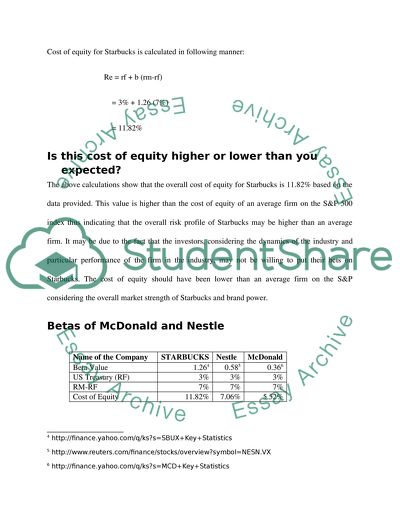Retrieved from https://studentshare.org/finance-accounting/1578845-risk-and-return-portfolio-diversification-and-the-capital-asset-pricing-model-the-cost-of-equity-starbucks-co
https://studentshare.org/finance-accounting/1578845-risk-and-return-portfolio-diversification-and-the-capital-asset-pricing-model-the-cost-of-equity-starbucks-co.


